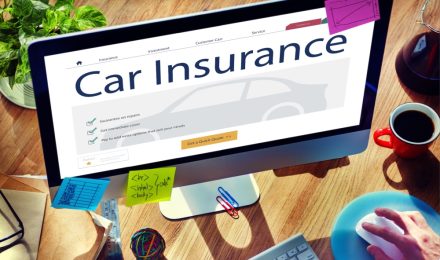Are you tired of paying high auto insurance premiums? Take control of your expenses with these 10 practical tips!
From cellphone bills to gas, rent, and car insurance, nobody wants to overpay for necessities. While car insurance is essential, there are ways to cut costs and keep more money in your pocket. Smart drivers understand how to find affordable coverage without compromising protection. Here’s how you can do the same.
1. Maintain a Clean Driving Record
It’s no surprise that safe drivers pay lower insurance premiums. Your driving history reflects the number of tickets and accidents you’ve had. The more violations on your record, the higher your rates—or worse, the harder it will be to get coverage. Practicing safe driving habits not only keeps you protected but also helps insurers offer you better rates.
2. Compare Coverage Options
Never settle for the first insurance quote you receive. Policies differ based on the level of protection they offer, deductibles, and additional features. Compare multiple options and work with an agent to find an affordable plan that provides adequate coverage for you, your passengers, and other road users.
3. Accurately Describe Your Occupation
Your job title can influence your insurance rates. Some professions are deemed riskier than others. For example, a chef may pay more than a kitchen staff member. Jobs in journalism, construction, teaching, and office work often come with varying insurance costs. Choose an accurate job title that reflects your work while helping you secure lower premiums.
4. Drive an Older Car
Newer cars come with higher insurance premiums due to their expensive repair and replacement costs. If you want to save on insurance, consider driving an older, reliable vehicle that doesn’t require costly coverage.
5. Bundle Your Insurance Policies
If you already have renters or homeowners insurance, consider bundling it with your auto insurance. Many providers offer discounts when you purchase multiple policies from them, helping you save significantly on premiums.
6. Take Advantage of Discounts
Insurance companies offer various discounts, such as those for good drivers, students, or military personnel. Always check for available discounts to ensure you’re getting the best deal. However, not all discounts apply to everyone, so speak with your agent to understand which ones you qualify for.
7. Drop Unnecessary Coverage
If you own an older car, you might not need comprehensive or collision coverage. Collision insurance covers damages when your car crashes into an object or flips over, while comprehensive insurance covers theft, vandalism, and natural disasters. If the cost of these coverages exceeds the car’s value, consider dropping them and setting aside money for repairs or a new vehicle instead.
8. Choose a Car That’s Cheaper to Insure
Before buying a new car, research its insurance costs. Vehicles like small SUVs tend to have lower premiums compared to flashy, high-end models. A little research upfront can save you a lot in the long run.
9. Improve Your Credit Score
In many states, insurance companies use credit scores to determine premium rates. A higher credit score can lead to lower insurance costs. If you live in states like Hawaii, California, Michigan, or Massachusetts, where credit scores aren’t factored in, this won’t apply—but in most places, good credit can save you money.
10. Shop Around for Better Rates
Insurance rates often increase annually, causing many customers to switch providers. While some insurers offer loyalty discounts, it’s always worth comparing quotes from competitors. You may find a better deal elsewhere.
Final Thoughts
Car insurance prices are likely to keep rising, but you don’t have to overpay. By following these tips, you can reduce your premiums while maintaining the coverage you need. Always compare quotes and choose an insurance policy that fits your budget and protection requirements.
Are you tired of paying high auto insurance premiums? Take control of your expenses with these 10 practical tips!
From cellphone bills to gas, rent, and car insurance, nobody wants to overpay for necessities. While car insurance is essential, there are ways to cut costs and keep more money in your pocket. Smart drivers understand how to find affordable coverage without compromising protection. Here’s how you can do the same.
1. Maintain a Clean Driving Record
It’s no surprise that safe drivers pay lower insurance premiums. Your driving history reflects the number of tickets and accidents you’ve had. The more violations on your record, the higher your rates—or worse, the harder it will be to get coverage. Practicing safe driving habits not only keeps you protected but also helps insurers offer you better rates.
2. Compare Coverage Options
Never settle for the first insurance quote you receive. Policies differ based on the level of protection they offer, deductibles, and additional features. Compare multiple options and work with an agent to find an affordable plan that provides adequate coverage for you, your passengers, and other road users.
3. Accurately Describe Your Occupation
Your job title can influence your insurance rates. Some professions are deemed riskier than others. For example, a chef may pay more than a kitchen staff member. Jobs in journalism, construction, teaching, and office work often come with varying insurance costs. Choose an accurate job title that reflects your work while helping you secure lower premiums.
4. Drive an Older Car
Newer cars come with higher insurance premiums due to their expensive repair and replacement costs. If you want to save on insurance, consider driving an older, reliable vehicle that doesn’t require costly coverage.
5. Bundle Your Insurance Policies
If you already have renters or homeowners insurance, consider bundling it with your auto insurance. Many providers offer discounts when you purchase multiple policies from them, helping you save significantly on premiums.
6. Take Advantage of Discounts
Insurance companies offer various discounts, such as those for good drivers, students, or military personnel. Always check for available discounts to ensure you’re getting the best deal. However, not all discounts apply to everyone, so speak with your agent to understand which ones you qualify for.
7. Drop Unnecessary Coverage
If you own an older car, you might not need comprehensive or collision coverage. Collision insurance covers damages when your car crashes into an object or flips over, while comprehensive insurance covers theft, vandalism, and natural disasters. If the cost of these coverages exceeds the car’s value, consider dropping them and setting aside money for repairs or a new vehicle instead.
8. Choose a Car That’s Cheaper to Insure
Before buying a new car, research its insurance costs. Vehicles like small SUVs tend to have lower premiums compared to flashy, high-end models. A little research upfront can save you a lot in the long run.
9. Improve Your Credit Score
In many states, insurance companies use credit scores to determine premium rates. A higher credit score can lead to lower insurance costs. If you live in states like Hawaii, California, Michigan, or Massachusetts, where credit scores aren’t factored in, this won’t apply—but in most places, good credit can save you money.
10. Shop Around for Better Rates
Insurance rates often increase annually, causing many customers to switch providers. While some insurers offer loyalty discounts, it’s always worth comparing quotes from competitors. You may find a better deal elsewhere.
Final Thoughts
Car insurance prices are likely to keep rising, but you don’t have to overpay. By following these tips, you can reduce your premiums while maintaining the coverage you need. Always compare quotes and choose an insurance policy that fits your budget and protection requirements.



